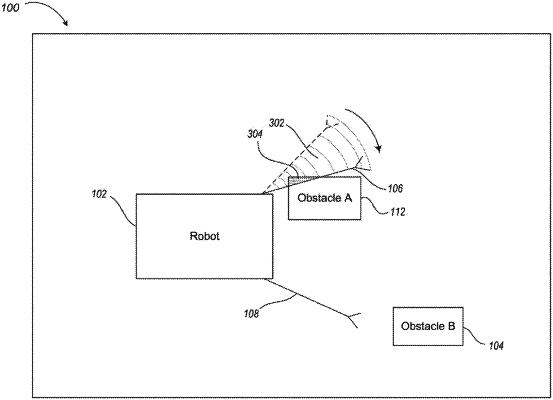| CPC B25J 9/1666 (2013.01) [B25J 9/0093 (2013.01); B25J 9/161 (2013.01); B25J 9/1697 (2013.01); B25J 13/088 (2013.01); B25J 15/0019 (2013.01); B25J 15/04 (2013.01); B25J 17/02 (2013.01)] | 17 Claims |

|
1. A method of operation in a robotic system including a first appendage and at least a second appendage, the first and the second appendage moveable within a first operational volume and a second operational volume, respectively, at least a portion of the second operational volume overlapping with at least a portion of the first operational volume such that the first and second appendages are capable of physically colliding with one another, the method comprising:
generating at least a first motion plan for a first appendage that moves the first appendage between at least a respective first pose and a respective second pose within the first operational volume without collisions at least between the first and the second appendages;
generating at least a second motion plan for a second appendage that moves the second appendage between at least a respective first pose and a respective second pose within the second operational volume without collisions at least between the first and the second appendages;
causing the first appendage to move according to the first motion plan;
causing the second appendage to move according to the second motion plan; and
updating at least one of the first or the second motion plans.
|